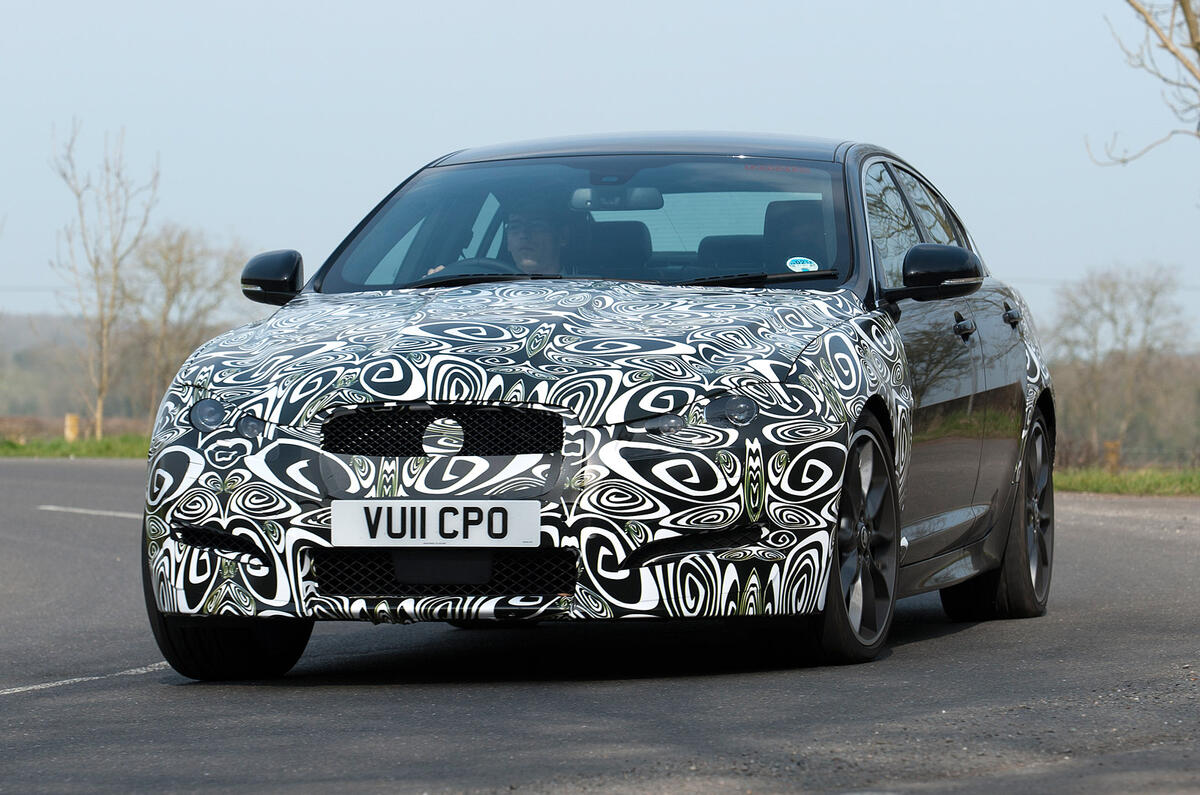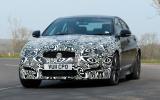What is it?
Jaguar is six months from launching what will rapidly become its most important, most affordable and biggest-selling XF saloon, the 188bhp 2.2-litre turbodiesel. Autocar has been given an exclusive sneak preview of how it will drive.
The long-awaited model, expected to account for around 60 per cent of XF sales, will use the first ‘north-south’ version of the familiar 2.2-litre, four-cylinder diesel engine that powers various PSA and Ford models, along with the Land Rover Freelander and forthcoming Range Rover Evoque.
The new XF will have a series of still-secret 2012 exterior and interior updates (hence the test car’s exotic camouflage) and drop below the 150g/km CO2 and £30,000 price levels so important to company car buyers.
The engine will also have ZF’s new eight-speed auto transmission and a new stop-start system that restarts the engine as soon as the driver comes off the brakes to drive away. Both of these are vital components in the car’s ability to achieve a combined fuel consumption of 52.3mpg and an easy cruising range of 750 miles.
Jaguar is anxious to point out there’s far more to building this XF than just ‘dropping in’ the new engine. New also are piezo injectors, a Mitsubishi turbocharger and an oil cooler. There are big revisions to the induction system and the manifolds are new, as is the sump. Jaguar has also installed its special engine management to match powerplant and gearbox.
What's it like?
Lower costs and better fuel economy are all very well, but one question burns brighter than all the rest: can this econo-XF still cut it as a fully fledged Jaguar? The answer is a resounding yes; the engineers have expended plenty of time and effort making it so. The careful sound-deadening pack double-insulates the bulkhead, wrapping even ancillaries such as the alternator and turbocharger in duvet-like padding.
The eight-speed transmission has been calibrated for the XF’s performance and weight (the four-cylinder engine saves 65kg compared with a petrol V6), while the XF’s rotary gear selector on the console and steering column paddles for manual selection are retained.
On the road, the car is quiet, long-legged and torquey. From the driver’s seat you’re barely aware of a four-cylinder rattle even at idle, and never on the move. The transmission’s ultra-low first and second gears give it impressive step-off (making the most of the engine’s generous 332lb ft of torque), yet the eight-speeder allows motorway cruising with less than 2000rpm showing on the tacho.
Automatic gearchanges are near enough to imperceptible, but you hear and feel a quick, smooth response when using the gearchange paddles. And there’s an irresistible bonus when you come to refuel the car: the trip computer predicts a maximum touring range of more than 800 miles.
We weren’t supposed to judge our prototype’s chassis. Engineers say they still have development work to do. To us, though, the car had all the XF credentials: supple bump absorption considering its impressive body control, near-perfect straight-line stability and plenty of cornering authority through the familiar excellent steering. Cornering was roll-free and near-neutral. When it was time to accelerate again, the generous torque, which peaks at just 2000rpm, gave impressive thrust.



















Join the debate
Add your comment
Re: Jaguar XF 2.2D
Just ignore it.
Re: Jaguar XF 2.2D
Are you still here twittering away?
Re: Jaguar XF 2.2D
Indeed, but isn't the whole purpose of these engines to provide cheaper ownership prospects for the company car driver? That's my understanding of the term 'tax writedown', anyway.